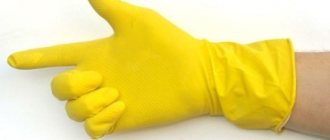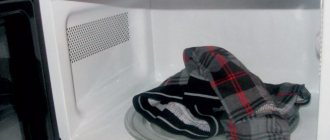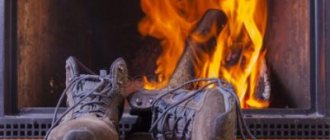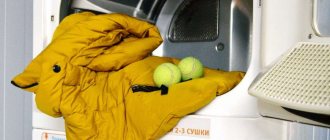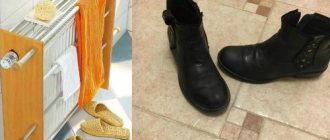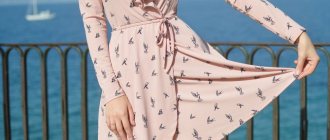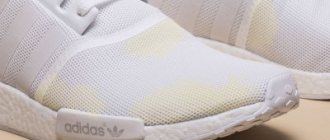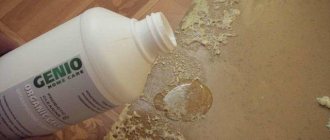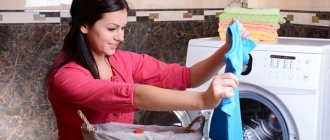Suede shoes always look very attractive. This type of shoe is chosen by people with a subtle sense of style and original taste. However, some are still afraid to purchase shoes or boots made of suede, since it is generally known that this is a very capricious material that requires constant care. Experts advise not to deny yourself the pleasure of wearing a beautiful thing by studying the basic rules for caring for suede shoes. In particular, suede boots need to be dried properly so that the material does not lose its elasticity and softness.
How to dry shoes correctly
Wet shoes are always a big problem. Firstly, the likelihood of catching a cold increases, and secondly, the chance of ruining your favorite shoes or boots. To avoid such unpleasant incidents, everyone should know how to dry shoes. Simple tips will help you get rid of the problem forever, because anyone can get caught in the rain.
All shoes, regardless of material, require drying, but special attention should be paid to:
- suede products – they are more demanding;
- products with leather soles.
If the shoes are soaked through, it will take much longer to dry them.
Basic rules
Any shoes, regardless of the material they are made of, are subject to deformation when wet. But the skin, of course, fears moisture most of all. Therefore, the first thing the owner of wet shoes needs to do is take off a pair. Shoes dried directly on your feet may have a completely different look, which you are unlikely to like.
The story of how to properly dry wet shoes begins with three main rules. These rules are general in nature and are relevant both for membrane sneakers and for fabric sneakers and boots made of genuine leather or leatherette.
- Removing external moisture. If you want to get streak-free shoes as a result of emergency drying, first of all, remove all accumulated moisture from the surface. Any unnecessary rag that absorbs water well will help you with this. Ideally, a piece of cotton fabric.
- Removal of insoles. You need to dry your shoes inside without insoles. This element is dried separately and dries much faster than the shoes themselves. To achieve the fastest possible effect, after removing the insoles, you need to open the sneakers or boots as much as possible, ensuring a flow of fresh air inside.
- Wise choice of premises. Ideally, drying should be done in a well-ventilated room where the air temperature does not exceed 18 °C. But if you have no choice, dry it where you can.
About taboo
Most people, coming home after rain with soaking wet shoes, do the same thing: take off their shoes and put them on the radiator. Or they are applied close to an electric heater. Particularly “resourceful” people try to dry the steam in a microwave, electric oven or gas oven. Doing this is strictly prohibited. And that's why.
- Deformation. All of the gas and electric appliances listed above, as well as heating systems, are not able to dry shoes evenly. For this reason, boots and sneakers often become deformed. This is especially noticeable on shoes made of leather, leatherette and suede.
- Peeling of the sole. Drying in the oven, microwave, radiator or heater can lead to delamination or peeling of the sole. The reason is the same - uneven heating of the surface.
- High fire hazard. The fact that the couple will deteriorate is not so bad. But the increased risk of fire is a real problem. Of course, drying on a radiator will not lead to a fire, but drying in a microwave or oven is easy. And if you decide to take a risk, don’t take your eyes off your wet boots.
There are exceptions to every rule. The only electrical device that can be used to remove moisture from shoes and sneakers is an electric dryer. This miniature, simple in structure and absolutely safe device is capable of drying wet sneakers overnight. As well as winter boots with natural fur.
How to dry shoes: initial steps
There are a number of rules that must be followed:
- It is imperative to remove the affected shoes. Therefore, it is recommended to have a spare pair at work.
- It is good to remove dirt if there is any.
- Pull out the insoles and laces. The product must be opened as much as possible, everything possible must be removed from it.
- Many are convinced that the best way to dry shoes is with a battery, but in fact, doing this is prohibited. Otherwise, the material may be seriously damaged and even become unusable.
Electric dryers
Electric dryers are special devices aimed at home use or use in the service sector.
They come in several types, which differ in a number of parameters:
- appearance;
- principle of operation;
- cost, etc.
Principles for choosing an electric dryer:
Quality of material.- No damage to the housing or power cord.
- The size of the working part allows it to be easily placed inside any pair of shoes.
- The longer the cord, the more convenient it will be to use the device.
- It is advisable that the heating time be about a quarter of an hour. A longer heating period will require more time to dry the steam.
- The heating temperature should be up to +50 or +60°C. A higher heating rate is not desirable, as it can lead to damage to shoes, and low heating is ineffective.
Professional industrial shoe dryers are designed for use in laundries. And they are extremely rarely used at home.
They are quite bulky, have a high cost, and consume a lot of electricity . For children's shoes, separate models designed for small sizes are available.
Models with flexible heating loops or two blocks
The cheapest option is simple electric dryers. Many are a flexible, insulated loop that fits comfortably inside your shoe.
They are universal, suitable for drying a wide variety of models, making this process as soft as possible - using heat. There are also options for more complex construction and design that have a similar operating principle.
The advantages of this choice:
- simplicity of the device;
- ability to use on the road, on business trips, etc.;
- compactness;
- soft effect on the shoes themselves;
- low cost (from 130 rubles).
Flaws:
- takes quite a long time to dry completely;
- very cheap designs can be fragile.
Wooden heating pads
Wooden stands are made from moisture-resistant plywood. They are used not only for drying shoes, but also for warming up the threshold area, heating the feet, etc.
To dry, shoes are placed on plywood and the device is turned on. It takes several hours for the pair to dry completely. Cost – more than 1,000 rubles.
Advantages:
- Easy to use.
- Multifunctionality, which allows you to use the device for other purposes, not just drying shoes.
- Ease of use.
Disadvantages of use:
- It takes a lot of time to dry shoes after washing.
- Dimensions of the stand.
- Inconvenient transportation.
- Relatively high cost.
The action of such a local electrical appliance is similar to a heated floor.
Ultraviolet dryers
A shoe dryer with ultraviolet radiation allows not only drying, but also antibacterial treatment. During operation of such a device, unpleasant odors and microorganisms that cause fungus are eliminated.
For example, the Shine ECB-12/220k model with a power of 12 W, according to the manufacturer, can cope with almost all common fungi and many bacteria, including staphylococcus, in a few hours of operation (from 3 to 6).
Advantages:
- efficiency;
- suitable even for delicate shoes;
- presence of a timer (many models);
- fungus prevention.
The disadvantage is the high cost (about 900 rubles for a model with a timer).
Ionizers
The supply of fresh ozonized air removes odors and moisture from shoes, leaving them feeling fresh. An example of such a device is Zenit xj-300, which provides the production of 1000 ions per 1 cm³.
Advantages:
- Efficiency.
- Quiet operation.
- Light weight (about 0.2 kg).
- Elimination of odors.
Flaws:
- It takes time to dry.
- Need batteries.
- High price (about 1,500 rubles).
The presence of additional functions leads to higher prices for models.
Sneakers, sneakers
You can dry wet sportswear using a washing machine or dryer. To do this, you just need to select the appropriate mode. You can use this method if:
- there is a function on the product label that allows such an action;
- We are talking about quality shoes;
- the basis is cotton or synthetics;
- sole made of soft material.
Inexpensive products may suffer, so it is better to do without experiments. When using a machine, you should listen to simple rules:
- place cotton towels in the drum along with the sneakers;
- remove the laces;
- set the time, 60 minutes is enough for the desired effect.
If white sneakers get caught in the rain, it is recommended to pat them well with a terry towel before drying. The fabric will absorb excess moisture, which will help avoid streaks.
Paper
Paper can absorb moisture well. Therefore, you can safely stuff products with it. However, you can use newspapers only for dark couples, but for light ones it is better to give preference to toilet paper. Otherwise, the product may absorb ink. For the best effect, tear the newspapers into small pieces.
As for how to dry leather shoes, the main thing here is to know when to stop. Do not stuff them too tightly, otherwise the material may stretch.
Change the paper every hour until the shoes are dry. You can even use this method for suede boots.
Everyone knows that rice absorbs moisture well, but whether it is possible to dry shoes with it is a fairly common question. It turns out it’s easy, and only two hours is enough.
To carry out the procedure you must:
- Take a cardboard box.
- Place a layer of rice at the bottom.
- Place the shoes on the croup with the soles facing up.
- Close the lid and leave for 2 hours.
Home drying methods
Methods for drying shoes at home are effective and not difficult. available in the household will come to the rescue
Paper
Using paper is one of the easiest ways. Lumps are formed from soft sheets that absorb moisture well. They are carefully tamped and stuffed into shoes.
As the paper becomes saturated with moisture, it is changed to dry . Drying is carried out at room temperature in a dry room.
Newsprint is suitable for such work due to its composition, but printing ink can color materials in contact with it. Including the inner surface of the shoe.
Rice
Rice grains have the property of absorbing moisture. This quality will come in handy when drying a washed or simply wet pair.
Procedure:
You need to prepare a tray or plastic box of such a size that you can put your shoes in it.- Pour rice cereal into the prepared container so that it covers the bottom by at least 30-50 mm.
- Place wet shoes on the rice with the soles facing up.
- Maintain in this position for at least 4 hours.
Silica gel
Toilet fillers with silica gel have good absorbency. To dry, you need the filler itself and regular socks.
Procedure:
- pour silica gel into each sock;
- tie the top edge of the sock;
- put socks inside;
- maintain the necessary drying time.
The filler can be used for several pairs without loss of drying quality, if after each use it is dried well, for example, on a radiator.
Cat litter
A good replacement for silica gel is cat litter . The gel one can be used in the same way as the previous option, but the mineral or wood one must first be put in two socks, and only then used.
This precaution is due to the presence of small particles of the substance that may remain after drying.
Hairdryer
As one of the home drying options, a regular hairdryer will do.
It must be used according to the instructions:
- Set the setting to cool.
- Turn on the hairdryer.
- From a distance of approximately 0.3 m, apply a stream of air into the shoes.
Using a household hand-held hair dryer is not a very convenient method, since complete drying requires up to 3 hours of almost continuous blowing.
Vacuum cleaner
If it is not possible to use other more convenient options, you can use a regular vacuum cleaner.
In this case, the hose must be connected to the blowing hole and the device must be turned on. This method also cannot be considered optimal, since control over the position of the hose, and the process itself, is still needed.
Another option is to place the wet pair closer to the vacuum cleaner so that the heated air hits it . It will not be possible to completely dry completely wet shoes in 15-20 minutes; you can only dry them a little.
Fan
A fan heater will help with drying. To do this, sneakers or another pair should be placed in such a way that air can freely blow through the inside.
In this case, the distance from the shoes to the fan must be at least 0.2 m. In this case, the fan speed must be set to maximum. And the shoes themselves should be unfastened so that the air can freely blow on the inside.
Disadvantages of this method:
- difficulty in organizing the placement of shoes in a suitable manner;
- long drying process;
- low efficiency.
Warm floor
You can also take advantage of a heated floor to dry your shoes. This method is gentle, but weakly effective due to the fact that it takes a lot of time to completely dry.
Silica gel
For those who are used to everything ready-made, you should pay attention to silica gel. These are special bags that can be easily purchased in the store. They need to be placed in the affected product for an hour. Then dry the bags on the radiator. Can be used many times. Moreover, you can take it with you and use it if necessary at work.
It will be a good lifesaver, but only if the product is slightly wet. You need to select the “cold air” mode and begin manipulation.
Dryers
To quickly dry shoes after getting wet, you can use dryers:
- Electric dryers. Usually similar to inserts that are placed inside boots. The tool is connected to a power source, the surface of the dryers is heated to a low temperature, gradually drying the shoes from the inside. Exposure time – from 3 hours. Inexpensive, easy to use. Suitable for gentle drying of leather, membrane or fabric shoes.
- With airflow. A more complex and larger mechanism, its price is higher than for electric models. It is a base with air ducts on which wet shoes, clothes or accessories are put on. When the equipment is connected to the network or a battery is placed inside, heated air enters the tubes, the flow of which dries the wet product.
- Ultraviolet. The most expensive models that also get rid of fungus. They are a combination of a blow dryer with the action of an ultraviolet light bulb.
